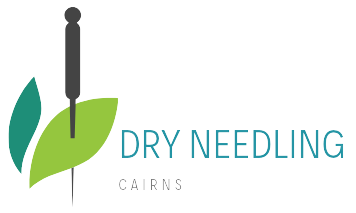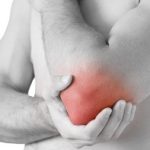Dry needling for Tennis Elbow Cairns
Dry needling may be able to help with the pain and discomfort associated with tennis elbow or lateral elbow pain. We may place the needles into the sore area which decreases the inflammation and pain by attracting blood to the area. The blood has macrophages and other factors that help with healing and repair. The dry needling effectively speeds up the healing process. We may use rocktape after the treatment or massage your forearm and arm to further help fix this problem. We may need a series of treatments – maybe four treatments depending on the severity of the pain and levels of inflammation.
Tennis Elbow
Make an Appointment today
If you would like to check our available appointment times or make a booking please click on this link http://cairns-massage-cairns-acupuncture.au1.cliniko.com/bookings
or click on this link https://dryneedlingcairns.com.au and go to book online button.
or you can click the book online button on the www.cairnsmassage.net.au website.
or send a text to 0408 054 538.
ANATOMY
The lateral epicondyle of the humerus, a bony prominence on the outside of the elbow, is the common site of attachment for most of the extensor muscles of the forearm Tennis elbow is a painful inflammation of the tendon on the lateral aspect of the elbow, caused by the pull of the muscles, which extend the wrist and fingers.
How does tennis elbow begin?
- Strain from repeated, forceful wrist extension (eg. gripping tennis racquet during a shot), causing degeneration and inflammation of the associated tendons.
What are the symptoms of tennis elbow usually –
- Pain is felt mainly at the outer part of the elbow, it may also radiate upwards along the upper arm, or downwards along the outside of the forearm.
- Grip strength is affected, causing problems with carrying things. In some cases light tasks, such as picking up a glass of water, are enough to precipitate pain.
- A distinct tender point is elicited by pressure or percussion over the lateral epicondyle or just distal to it.
- Pain occurs over the lateral epicondyle when with resisted wrist extension or third finger extension. These signs strongly suggest a diagnosis of ‘tennis elbow’.
Dry needling for tennis elbow cairns
Please phone Tanya Galvin on 0408 054 538 or email tanyagalvin@hotmail.com
tennis elbow cairns
Dry needling for tennis elbow cairns
The beginning of dry needling cairns.
This is a story that started in Victoria, went all over the world and came back and landed in Cairns –
After Graduating from her Bachelor of Health Science – Traditional Chinese Medicine: (with honours!!) Tanya Galvin opened her needling clinic in 2002 in Shepparton, Victoria.
In 2008 Tanya traveled the world working as doing needling, as a hypnotherapist, kinesiologist, spa therapist and Massage therapist on Cruise Ships around the world for Royal Carribean and Princess Cruise lines.
After five promotions to bigger and better cruise ships as a reward for doing a great job she decided to settle back in Australia.
Dry needling cairns was born….Tanya now uses all her treatment modalities to run a successful and busy clinical practice!
Please phone Tanya on 0408 054 538 or email tanyagalvin@hotmail.com
Dry needling’s primarily focused on reducing pain and restoring function through the release of myofascial trigger points in the muscle.
What is a Myofascial Trigger Point?
A myofascial trigger point, also known as a knot in the muscle, is a group of muscle fibres that have shortened when activated but have not lengthened back to a relaxed state after use. A myofascial trigger point develops a sensitive nodule in the muscle (Simons, Travell & Simons, 1999). In addition to this nodule, the remainder of the muscle also tightens to compensate (Simons et al., 1999; Simons, 2002). This hypersensitivity occurs as the muscle fibres become so tight that they compress the capillaries and nerves that supply them (McPartland, 2004; Simons et al., 1999). As a result, the muscle cannot frequently move, obtain a fresh blood supply containing oxygen and nutrients, or flush out additional acidic chemicals (McPartland, 2004; Simons et al., 1999). The presence of a myofascial trigger point in a muscle can lead to discomfort with touch, movement and stretching, decreased joint motion, and even a temporary loss of coordination (Simons et al., 1999).
How Does Dry Needling Work?
Dry needling assists with decreasing local muscular pain and improve function by restoring a muscle’s natural ability to lengthen and shorten by releasing myofascial trigger points.
What Does Dry Needling Do?
When the delicate filament needle inserts into the centre of a myofascial trigger point, blood pools around the needle, triggering the contracted muscle fibres to relax. This reaction, in turn, leads to the decompression of the local blood and nerve supply. It also helps to provide those fibres with fresh oxygen and nutrients and flushing away any additional acidic chemicals.
What Causes a Myofascial Trigger Point?
A myofascial trigger point develops as part of the body’s protective response following:
- injury – the muscle will tighten in an attempt to reduce the severity of an injury;
- unexpected movements, e.g. descending a step that is lower than initially anticipated;
- quick movements, e.g. looking over your shoulder while driving;
- change in regular activity or muscle loading, e.g. an increase in the number or intensity of training sessions for sport;
- sustained postures e.g. prolonged sitting for work or study;
- nerve impingement – the muscle will tighten to protect the nerve;
- stress;
- illness (bacterial or viral);
- nutritional deficiencies, or;
- metabolic and endocrine conditions.
(Simons, et al., 1999)
When Is Dry Needling Treatment Recommended?
Dry needling can assist in treatment:
- to help release myofascial trigger points (muscle knots);
- to assist with pain management, and;
- to restore movement at a joint if inhibited by myofascial trigger points.
What Will You Feel During Dry Needling Treatment?
During a dry needling treatment, you may feel a mild sensation as the needle inserts and withdraws. Patients don’t report any discomfort during needle manipulation.
A brief muscle twitch may occur during a dry needling treatment. This twitch may happen when the needle directly stimulates a myofascial trigger point.
Where Does Dry Needling Fit Within Your Rehabilitation Program?
Dry needling is one of many techniques that your physiotherapist can utilise to assist with your rehabilitation. We combine dry needling with other physiotherapy techniques, including massage, manual therapy, and exercise prescription.
What are the Side Effects of Dry Needling?
Every form of treatment can carry an associated risk. Your physiotherapist can explain the risks and determine whether dry needling is suitable for you based on your injury and general health.
When dry needling occurs, single-use, sterile needles are always used and disposed of immediately after using a certified sharps container.
Is Dry Needling Safe?
Everybody is different and can respond differently to various treatment techniques, including dry needling. In addition to the benefits that dry needling can provide, some side effects may occur, including spotting or bruising, fainting, nausea, residual discomfort or even altered energy levels. However, these symptoms should last no longer than 24 to 48 hours after treatment.
Can You Exercise After Dry Needling?
We recommend avoiding strenuous or high impact activities immediately after dry needling to allow the body time to recover and maximise the treatment benefits.


